

Shades of Meaning. Works. Skip to main content DigitalCommons@IMSA Part of the Arts and Humanities Commons Works in Arts and Humanities Session B-1: Geometry in Art & Architecture, Julie Dowling Professional Learning Day For King and Country: The Hobbit and the Great War, Ryan Chiu '14 2013 Fall Semester Deconstructed Gender Norms in Princess Mononoke, Karen Olowu '14 2013 Fall Semester To Be a Friend: an Analysis of Phineas’ Character, Joy Qiu '16 2013 Fall Semester The Conflict between Materialism and Idealism, Tina Zhang '16 2013 Fall Semester Why ‘Dead White Guys’ Help Advance the Human Condition, August Nagro '15 2013 Fall Semester Thou Cannot Create Perfection, Alyda Huerta '15 2013 Fall Semester Exploring Metaphor in The Great Gatsby, Dan Gleason Daniel Gleason, Ph.D, NBCT “My Life with My Cell Phone”: Creating a Magical Realist Story, Dan Gleason Daniel Gleason, Ph.D, NBCT Exploring Metaphor in The Great Gatsby, Dan Gleason The Great Gatsby Unit Acting Out the Old Sport, Leah Kind The Great Gatsby Unit Image.
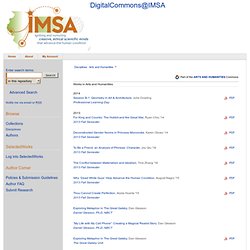
A model lesson? Part 1: routines vs gimmicks. It’s been a busy week this week.
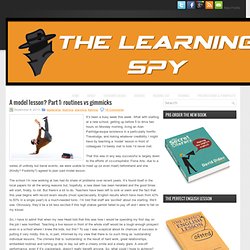
What with starting at a new school, getting up before 5 to drive two hours on Monday morning, living an Alan Partridge-esque existence in a particularly horrific Travelodge, and risking whatever credibility I might have by teaching a ‘model’ lesson in front of colleagues I’d barely met to kids I’d never met. That this was in any way successful is largely down to the efforts of co-conspirator, Fiona Aris: due to a series of unlikely but banal events, we were unable to meet up (or even meet) beforehand and she (Kindly? Foolishly?) Agreed to plan said model lesson. The school I’m now working at has had its share of problems over recent years. So, I have to admit that when my new Head told that this was how I would be spending my first day on the job I was horrified.
With this maelstrom of self-doubt swirling breathlessly, the stage was set. Routines Bell work Once seated, students cracked on with bell work, or the ‘Do Now’ as we call it at Greenwood. Bad Reviews, Elite Schools and Facebook Fakes. Casey Kelbaugh for The New York TimesGuy’s American Kitchen & Bar in Times Square.
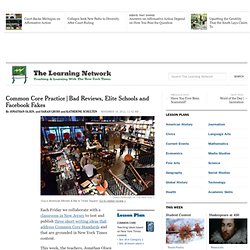
Go to related review » Each Friday we collaborate with a classroom in New Jersey to test and publish three short writing ideas that address Common Core Standards and that are grounded in New York Times content. This week, the teachers, Jonathan Olsen and Sarah Gross, and their ninth graders were just as taken with Dining critic Pete Wells’s review of Guy’s American Kitchen & Bar as the adult readers who sent it to the top of the Most E-Mailed list and the social media universe that made it a viral sensation.
“This is the best article we’ve read this year,” one student said. Below, some ideas for talking and writing about a review that was called “already a legend” just a day after it was published — along with two more tasks based on additional Times articles we think students will enjoy. Common Core Practice Tasks | Week of Nov. 12-16, 2012 Narrative Writing Before You Do the Task, You Might … 1. 2. Blogging Resources for Classroom Teachers. Posted by Bill Ferriter on Monday, 09/02/2013 I've spent the better part of the past weekend working up a presentation on how to incorporate blogging into the classroom and thought y'all might find some of the resources that I plan to share helpful.
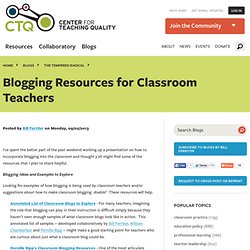
Blogging Ideas and Examples to Explore Looking for examples of how blogging is being used by classroom teachers and/or suggestions about how to make classroom blogging doable? These resources will help. Annotated List of Classroom Blogs to Explore - For many teachers, imagining the role that blogging can play in their instruction is difficult simply because they haven’t seen enough samples of what classroom blogs look like in action. Pernille Ripp's Classroom Blogging Resources - One of the most articulate advocates for classroom blogging is Pernille Ripp -- a fifth grade teacher in Madison, Wisconsin. This bit -- written for the Smartblogs Education site -- describes the hows-and-whys behind blogging in the primary grades. Teaching Students To Think And Analyze. The Best of the Humanities on the Web.
Inference and deduction skills - low ability. LEARN NC: Search Results. Cause and effect Students will identify and interpret cause and effect as expressed in poetry.
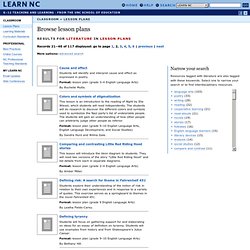
Format: lesson plan (grade 3–4 English Language Arts) By Rochelle Mullis. Colors and symbols of stigmatization This lesson is an introduction to the reading of Night by Elie Wiesel, which students will read independently. Format: lesson plan (grade 9–10 English Language Arts, English Language Development, and Social Studies) By Sandra Hurd and Wilma Gale. Comparing and contrasting Little Red Riding Hood stories This lesson will introduce the Venn diagram to students. Format: lesson plan (grade 2–4 English Language Arts) By Amber Miller.
Defining risk: A search for theme in Fahrenheit 451 Students explore their understanding of the notion of risk in relation to their own experiences and in response to a variety of quotes.